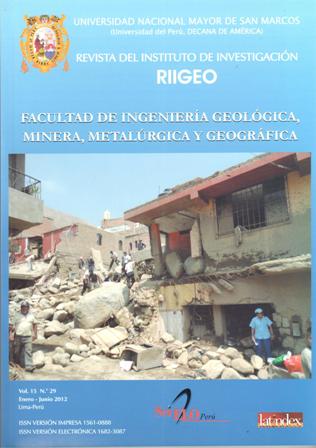Pre-feasibility study for the production of 2,5-DMF as a renewable and clean energy bicomponent to enhance octane biofuels Talara - PETROPERÚ SA
DOI:
https://doi.org/10.15381/iigeo.v15i29.2205Keywords:
Fuels, furan components, 2.5-dimetilfurano, biofuel, lignocellulosic wasteAbstract
It is very important scientific interest in developing new technologies for the conversion of renewable resources in sustainable energy, chemicals and biomaterials, as it involves environmental, political, and economic issues related to dependence that society has for the use of petroleum feedstock. The oil has other uses as raw material for about 95% of the carbon-containing chemicals used in our society. Under this, the interest in the study of furan components is to check viability of production, preparation and application thereof. One (enzymatic and chemical) hybrid-chemical route sucro area for the production of 2,5-dimetilfurano (DMF) as bicomponent clean renewable energy is presented in this research to improve the octane biofuel Talara Refinery - PETROPERÚ SA using biomass as feedstock. Compared to ethanol, 2,5-dimethylfuran (DMF) has a higher energy density (more than 40%), a boiling point higher (20 ° C above), and is not soluble in water. The developed technology creates a new route to transform native abundant renewable biomass resources in a convenient liquid biofuels for the transport sector, and may reduce the need for oil and fossil fuels. It also estimates the conversion of different lignocellulosic wastes in DMF, highlighting the bagasse as main attraction for the production of 0,119 L of DMF / kg of dry bagasse, with the Department of Piura a key development area.Downloads
Published
Issue
Section
License
Copyright (c) 2012 Gian Percy Lozano Flores

This work is licensed under a Creative Commons Attribution-NonCommercial-ShareAlike 4.0 International License.
AUTHORS RETAIN THEIR RIGHTS:
a. Authors retain their trade mark rights and patent, and also on any process or procedure described in the article.
b. Authors retain their right to share, copy, distribute, perform and publicly communicate their article (eg, to place their article in an institutional repository or publish it in a book), with an acknowledgment of its initial publication in the Rev. Inst. investig. Fac. minas metal cienc. geogr.
c. Authors retain theirs right to make a subsequent publication of their work, to use the article or any part thereof (eg a compilation of his papers, lecture notes, thesis, or a book), always indicating the source of publication (the originator of the work, journal, volume, number and date).






